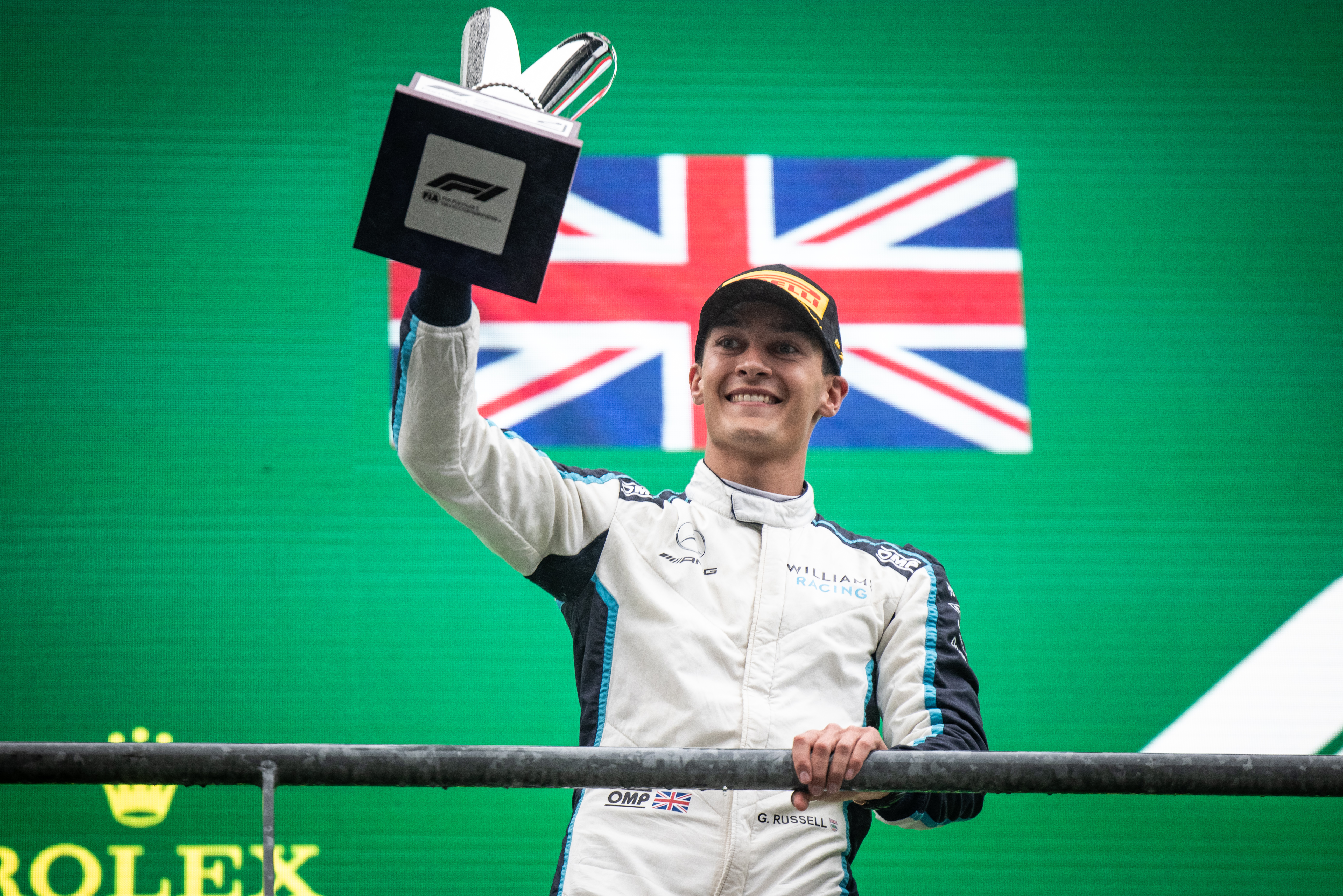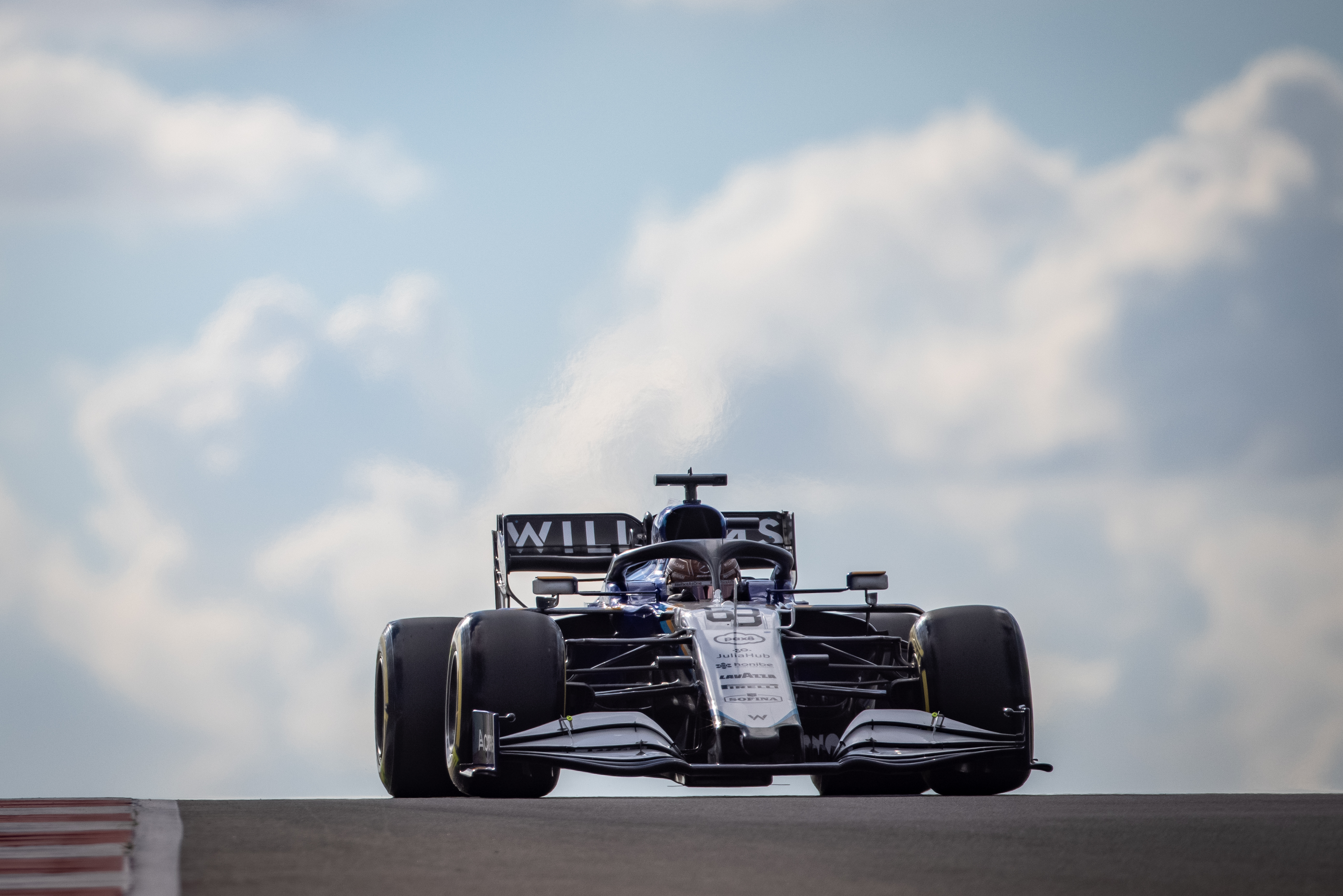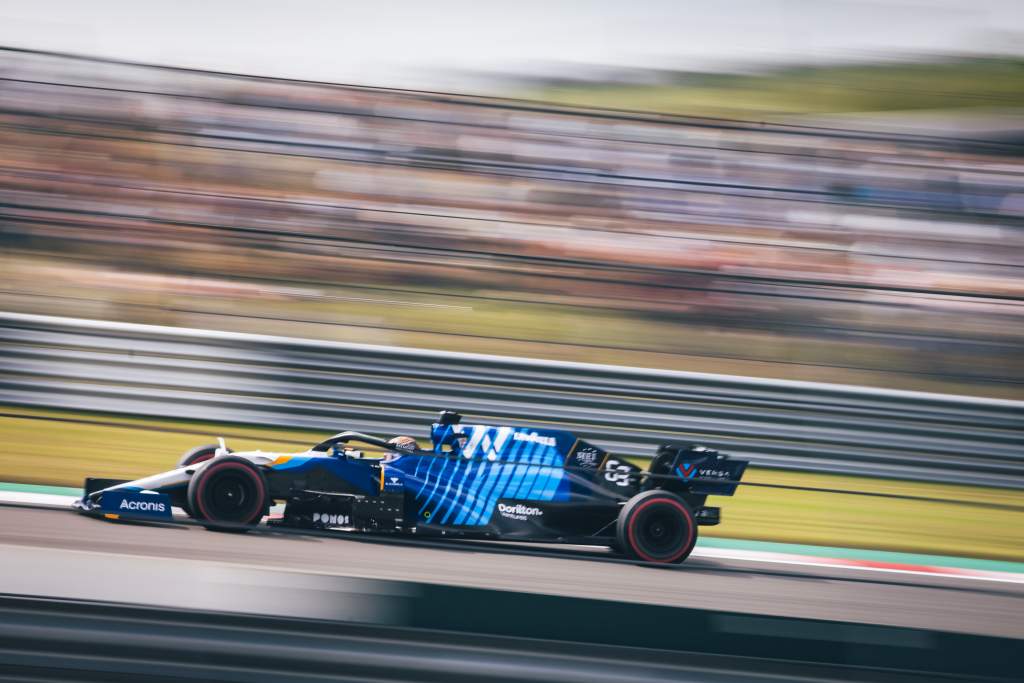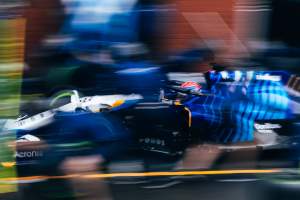Up Next

George Russell’s outstanding qualifying performances in uncompetitive machinery have been his calling card for much of his Formula 1 career.
But given his lofty grid positions, a regular question posed is if the Williams really sits only ninth-fastest in the competitive order as the statistics suggest. Even F1 championship leader Max Verstappen pointed out after Russell qualified third at Sochi, that the pace of the Williams is underrated by many.
On average of the fastest single laps of each race weekend, Williams is indeed ninth fastest on average. It’s 1.928% off the outright pace, just behind Alfa Romeo (1.824% off) and well ahead of backmarker Haas (3.232% off). Yet Russell’s record of just one Q1 exit, 12 eliminations in Q2 and four Q3 appearances appears at odds with that.
After all, you might expect on average the ninth-fastest car to be, on average, 18th-fastest. But that disregards several confounding factors, including Russell’s excellence in terms of his ability to get extra close to the maximum of his machinery while others fall short in potentially quicker cars, and the Williams team’s high quality of execution.
There can be offsets between qualifying and race pace, but the tendency of the Williams to regress to the mean in races in normal conditions is in line with the fact it’s more difficult to outperform potentially quicker cars over longer stints.
“I think we ebb and flow a little bit for eighth place with Alfa, so that’s part of it,” said Williams head of vehicle performance Dave Robson when asked by The Race about the Williams-Mercedes FW43B’s place in the competitive order.
“Typically, we can get pretty close to Alpine and Aston Martin, so I think eighth or ninth is probably where the car is at.
“Then we pick off at least the slower of the two Alpines and the slower of the two Aston Martins, and typically we’ve been able to pick off [Yuki] Tsunoda as well, but he’s done very well in the last couple of sessions.
“We’re ninth, certainly, sometimes eighth, at most seventh or sixth and sometimes we do a good job and pick off more cars than perhaps we should.”
Based on the fastest individual lap by each team, the Williams has been the ninth-quickest car in 10 out of 17 weekends. So not only is its pace average ninth-quickest, but so are its mode and median averages in terms of position.

Its mean position in the ranking is 8.4. By comparison, Alfa Romeo comes out exactly eighth by all measures – average pace and mode, median and mean position.
But what does stand out in the statistics is Russell’s performance level. Taking individual driver performance times, he’s ranked 15th, with Tsunoda, Kimi Raikkonen, team-mate Nicholas Latifi and the Haas drivers behind him – as well as Alfa stand-in Robert Kubica.
From there, as Robson says it’s usually a function of picking off the slower drivers in quicker teams that allows Russell to finish higher up the order.
Silverstone stands out, a high-speed circuit that is less downforce-dependent than it once was given the characteristics of the cars. There, Williams was the fifth-fastest car with Russell eighth-fastest behind the Mercedes, Red Bull, McLaren and Ferrari drivers – save for Carlos Sainz, who was just behind.

That was on a weekend when AlphaTauri and Alpine and Alfa Romeo struggled – while Sebastian Vettel’s Aston Martin appeared to have the pace to beat Russell but didn’t quite execute qualifying as well as he’d have liked.
But it’s not just Russell that is at the heart of this. Team-mate Latifi has also reached Q2 four times and the team’s more attacking approach under the leadership of Jost Capito has also proved beneficial. Likewise, the struggles of Raikkonen and Tsunoda in many – but not all – qualifying sessions have often made it relatively straightforward for Russell to reach Q2.
All the numbers point to Williams’s statistics accurately reflecting the pace of the car in the competitive order, with the small gap to Alfa Romeo and the slightly larger, but bridgeable, steps to Aston Martin and Alpine boosting its qualifying prospects.
There’s no question Williams is vastly improved from its 2019 nadir and even its improved ’20 campaign. But perhaps the most encouraging factors are the ability of Russell and the team together to execute qualifying superbly to extract the performance potential to get ahead of cars that, all things being equal, it would normally be behind.
The fact that it’s still difficult to convert those performances into results, with the pace inevitably regressing to the mean, as happens with all cars in race conditions, confirms that that car is, on average despite some spikes, the ninth best.








